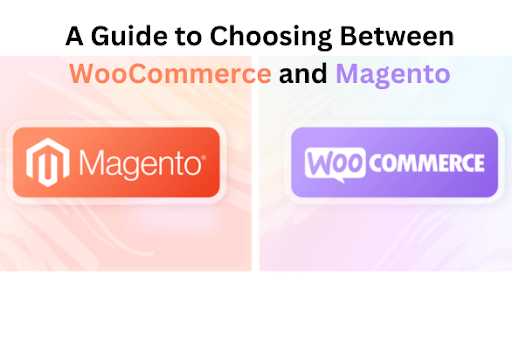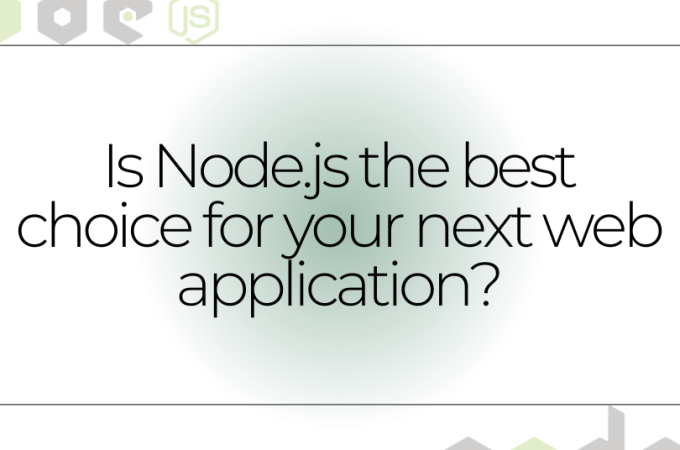
A guide to choosing between WooCommerce and Magento
Summary – WooCommerce and Magento both have gained significant popularity for developing eCommerce websites. They are backed with robust features and have their strengths and weaknesses. Therefore, choosing one between them is not easy and demands a thorough evaluation of both solutions. This article includes a comprehensive comparison between WooCommerce and Magento that will help you decide which one is best for your eCommerce site development.
When searching for the best solution to develop an online store, business owners often find them at a crossroads. This is because of the availability of numerous eCommerce platforms. Two renowned ones are WooCommerce and Magento, both having capabilities to develop robust eCommerce websites.
While sharing some similarities, these two platforms differ in terms of architecture, customization capabilities, and targeted user base.
In this exploration, we shed light on the distinctions between WooCommerce and Magento along with their respective strengths and weaknesses. These insights will help you make an informed decision when selecting the most suitable option for your needs.
Table of Contents
ToggleWooCommerce vs Magento: Overview
WooCommerce
WooCommerce is a WordPress plugin with a large market share in the eCommerce landscape. As per Builtwith’s data, WooCommerce powers around 13M+ customers and 5M+ websites.
Key features:
- Vast collection of extensions
- Both free and premium themes
- Unlimited product uploads
- Numerous payment processors
- Flexible shipping options
- Product management
- Reporting and analytics
Businesses operating on WordPress will find WooCommerce ideal for eCommerce website development. However, without prior WordPress experience, handling WooCommerce is slightly difficult, especially during setup, server configurations, plugin conflicts, and customization. In case, you don’t have any in-house support for this, you might require a WooCommerce development company to cater to your requirements.
Magento
Magento (now Adobe Commerce) is a content management system (CMS) dedicatedly designed for developing online stores. It has earned significant popularity; as per Builtwith’s statistics, Magento has about 6.82L+ customers and 1.27L+ live websites.
The platform is available in many editions, including:
- Magento Open-Source (previously referred to as Magento Community Edition (CE)) – A free version
- Adobe Commerce (previously Magento Enterprise Edition (EE), or Magento Commerce) – A paid version with advanced features
- Adobe Commerce Cloud (or, Magento Commerce Cloud) – Includes all capabilities of the paid version but is able to develop a cloud-based eCommerce site
Key features:
- Multi-store functionality
- Robust security features
- Payment options
- Advanced reporting & analytics
- SEO capabilities
- API integrations
Unlike WooCommerce, Magento is not user-friendly and thus a reliable choice for tech-savvy individuals who want to build complex online stores. If you lack technical expertise and internal support but want to leverage Magento’s potential in developing your online store, outsourcing the project to a Magento development company is an ideal solution.
Also Read: Strategies for Retaining Users in Mobile Apps
WooCommerce vs Magento: The pros and cons
This strengths and weaknesses analysis of WooCommerce and Magento aims to provide you with a quick picture of both platforms. It will give you valuable insights into what each platform brings to the table and is helpful in the decision-making process for selecting a suitable one.
WooCommerce
Pros:
- Easy to install and set up: WooCommerce comes with a user-friendly interface and has an easier setup procedure.
- Cost-effective: It is free to use but you may need to pay for additional extensions and themes.
- Large community: Being a WordPress plugin, WooCommerce benefits from the vast WordPress community for support and resources.
- Flexibility: WooCommerce comes with an extensive library of plugins and extensions that allow users to add various functionalities to their online store. It integrates well with WordPress and provides additional features through the WordPress ecosystem.
Cons:
- Scalability: WooCommerce may not be as scalable as Magento, and therefore, well suited for smaller to medium-sized businesses (SMEs).
- Dependency on WordPress: If you prefer a standalone eCommerce platform, WooCommerce’s dependency on WordPress is a limitation.
- Security issues: Though WooCommerce is designed with security in mind, using third-party plugins introduces vulnerability. Additionally, its security is also influenced by the hosting environment.
- Customization limitations: While WooCommerce offers many themes and plugins, customization is limited compared to Magento, especially for complex requirements.
Magento
Pros:
- Scalability: Magento is a scalable platform suitable for handling large-scale eCommerce stores. It is an ideal choice for large enterprises with extensive product catalogs and high traffic.
- Customization: Magento provides flexibility in terms of design, functionality, and integration. It is highly customizable and helpful in cater to unique or complex requirements of businesses.
- Feature-rich: Magento comes with a wide array of built-in features, including advanced product management and multi-language support.
- Community and support: Magento has a strong community and good support. There’s a wealth of documentation, forums, and professional developers familiar with the platform.
Cons:
- Complexity: Magento can be complex and resource-intensive, especially for users with limited technical expertise. It has a steeper learning curve compared to WooCommerce.
- Cost: When opting for Adobe Commerce edition, Magento can be more expensive to implement and maintain. However, the cost will include core application support, deployment tools, infrastructure, performance monitoring tools, and many more.
- Performance: While Magento has robust capabilities, it might require more server resources than WooCommerce. Additionally, performance optimization is crucial for the optimal speed of a Magento store.
Magento vs WooCommerce: A comprehensive comparison
Installation and setup
Both platforms require manual installation but are different in process. Installing and configuring WooCommerce is quite handy, but needs a basic understanding of WordPress.
In contrast, managing Magento requires technical expertise. The process involves technical requirements like server configurations, database setup, and file permissions. Non-technical users may find it helpful to hire Magento developers instead of following comprehensive installation guides to navigate the setup process.
The verdict
WooCommerce is easy to install and set up.
Themes and design options
WooCommerce and Magento both offer a theme marketplace that lets developers pick a desired theme for their e-commerce site development.
WooCommerce, being a WordPress plugin, offers a vast selection of themes including free and premium options. These design options offer flexibility and cater to diverse business needs. Conversely, Magento has a small collection of themes but is able to handle complex design requirements.
The verdict
It’s a tie!
Customization
WooCommerce has a degree of simplicity in theme customization. You can easily customize the number of products displayed or alter the content, but any complex requirement beyond that will require editing the theme’s code which can only be expected from experienced WooCommerce developers.
Magneto, on the other hand, excels in customization but has a complex process for doing the same. You won’t be able to customize a Magento theme without any prior coding experience or internal support. An alternate solution for this is to take custom Magento development services from an experienced developer.
The verdict
Though it seems a tie between both platforms, it depends on your customization needs. For easy customization, WooCommerce offers a user-friendly approach, but when it comes to complex needs both of the solutions require technical expertise.
Payment gateways
WooCommerce can be easily integrated with numerous payment gateways, including PayPal, Stripe, and Square. Moreover, it lets store owners integrate additional payment methods via plugins.
Magento offers in-built support for major payment gateways such as Authorize.net and Braintree. It also allows the integration of third-party payment solutions and can handle multiple currencies.
The verdict
It’s a tie! Both WooCommerce and Magento support a vast array of payment options.
Security
WooCommerce is a secure platform that benefits from regular updates and a large community that contributes to addressing security issues. It supports SSL encryption and follows industry standards. However, beyond these security features, incorporating third-party extensions can make your WooCommerce store vulnerable.
Magento is backed with robust security features like data encryption, and secure payment gateways. The platform has a dedicated security team responsible for monitoring and addressing threats. Additionally, Magento gives two-factor authentication that adds an extra layer of security to user accounts. It is also PCI DSS compliant which means the platform securely handles transactional data.
The verdict
Here, Magento is the winner.
Speed and performance
WooCommerce is lightweight and quicker to set up. Although the platform offers features for site caching and optimization, performance ultimately depends on your site’s complexity, the hosting you choose, plugin usage, and image optimization. Moreover, for SMEs, WooCommerce’s performance is satisfactory, but for high-traffic sites, it may face challenges.
On the other hand, Magento’s architecture and caching mechanisms make it suitable for handling complex eCommerce needs. However, the platform exhibits faster website loading times, but with its open-source version, your site’s performance will depend on factors like the chosen hosting plan, the number of plugins used, and CDN implementation.
The verdict
WooCommerce performs well and is a go-to choice for SMEs in terms of high-loading websites. However, it may face challenges with an extensive product catalog, where Magento performs well. So, here, the winner between both platforms depends on your project needs. Furthermore, if we compare the Magento open-source edition with WooCommerce, then the site’s speed can vary based on server configurations and hosting choices.
Bottom line
However, the article covered a detailed comparison between WooCommerce and Magento, choosing one among them entirely depends on your needs.
If you are tech-savvy, prefer scalability and have no budget constraints, Magento website development can be your way to go. But, for SMEs looking for a cost-effective and user-friendly platform, WooCommerce will be best. However, you will still have to hire eCommerce developers for complex customization needs, in case there is no internal support.
Harry is a Digital Marketing Consultant and professional Blogger. He has 6+ years of experience in SEO, SMO, ASO, Blogging, ORM & Google Ads. He loves Blogging Very Much.




